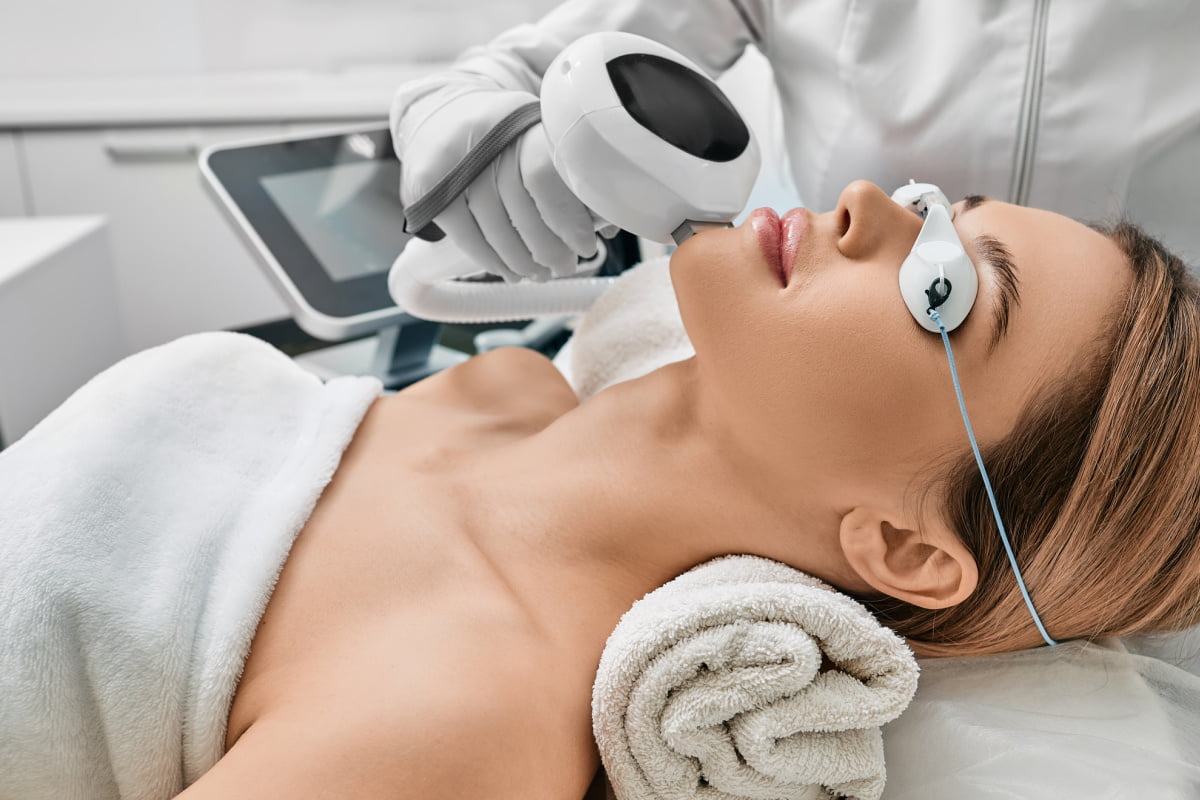

Whether you are a Botox regular or you have checked out some medical spas and plastic surgeons on Instagram, you have likely heard the terms “non-surgical” and “minimally invasive.” Below, we explain what they usually mean, and what to look for when selecting a medical spa treatment.
Defining non-surgical or non-invasive
When a treatment is non-surgical (or non-invasive), it is performed on the surface of the skin, or topically (i.e. it requires zero incisions). Licensed aestheticians typically perform non-surgical treatments; however, these procedures are not without risks, and for your safety, the provider you choose should be working under the direction of a board certified plastic surgeon or dermatologist.
Treatments we consider to be non-surgical or non-invasive at Kalos Medical Spa include:
- Coolsculpting®—a cold applicator on the skin stimulates gradual fat reduction in areas like the abdomen and thighs
- Ultherapy®—Ultrasound energy applied to the skin surface promotes firmer skin
- Hydrafacial®—A water vortex handpiece cleanses pores and infuses skin with nourishing ingredients
- Hydrafacial Perk—Hydrafacial enhancement options brighten the eyes and plump the lips
- ResurFX™ laser skin resurfacing—A fractional, non-ablative laser targets deeper layers of skin to promote firmness and elasticity
- Laser hair removal—A laser targets hair follicles for stubble-free skin
- IPL photofacial—Topical light device reduces discoloration, including sun spots and spider veins
- Chemical peels, i.e. the VI Peel—A solution applied to the skin improves cell turnover for a brighter, clearer complexion
- Dermaplane—A thin blade gently sloughs away top layers of skin and peach fuzz
- Medical-grade skincare—Rigorously tested products containing active ingredients are used at home to maintain results and promote healthy skin
While non-surgical treatments are relatively low-risk in the hands of a skilled provider, devices that use heat, cold, light, lasers, radio frequency (RF), and ultrasound are highly technical treatments requiring extensive knowledge and training. So before any treatment, educate yourself on its benefits and risks, and find an outstanding, reputable specialist you can trust to use the product safely and effectively.
Defining minimally invasive
Medical spas may offer minimally invasive procedures, which require a very small incision or skin puncture. Compared with surgery, these may offer the advantage of an easier procedure and recovery.
Minimally invasive treatments and procedures include:
- Neuromodulators (i.e. Botox®, Dysport®, and Daxxify®)—“Tox” injected in facial muscles with a fine needle to relax targeted areas and reduce wrinkles
- Dermal fillers (i.e. Juvéderm®, Restylane®, and Sculptra®)—Injections of filler beneath the skin add volume and promote collagen production long-term for plump skin
- Fractional CO2 laser skin resurfacing—An ablative laser, applied in a fractional checkerboard pattern, refreshes the top layer of skin for a younger-looking complexion
- FemTouch™—Laser vaginal treatment promotes collagen production to tighten and remodel tissues of the vaginal wall, improving pH for optimal health
- Kybella®—Injectable treatment dissolves fat in the submental area (the double chin)
- Platelet-rich plasma (PRP)—Improves fine lines, discoloration, and other signs of aging with platelet-rich plasma derived from your own blood
- SkinPen® microneedling—Fine needles passed over the skin promote firmness and improve flaws like fine lines and acne scars
In contrast, aesthetic surgical procedures typically require longer incisions so that tissues can be more significantly manipulated. Anesthesia is typically required to keep patients comfortable during true surgery, and the surgeon should be board certified by the American Board of Plastic Surgery.
Non-surgical or minimally invasive is not always safer
The safety and effectiveness of a treatment depends on your specialist and the nature of the treatment, not simply the term “minimally invasive.” The terms “non-surgical,” “non-invasive,” and “minimally invasive” are not regulated, so they may be used incorrectly to suggest decreased risks of treatment.
When choosing a treatment for yourself, focus on the details of the procedure, the results you can expect, and the experience of your provider. After researching the treatment online, ask how long the technology has been around, the potential side effects, any downtime (or “social downtime” for redness, bruising, or swelling) you may require, and possible long-term risks.
An upstanding medical spa has staff who are deeply knowledgeable about risks and side effects. They should prioritize educating you about these before providing any treatment, non-surgical or otherwise.
Visit Kalos Medical Spa for trusted advice & aesthetic expertise
At Kalos Medical Spa, our medical providers and aestheticians are professional, highly trained experts. Further, all of our treatments are carefully screened by Board Certified Plastic Surgeon Dr. Emily Kirby for efficacy before we ever offer them to patients.
To schedule your consultation and learn about the range of modern cosmetic treatments that are available, reach out to our knowledgeable staff at 817-292-4200 or contact us online.

